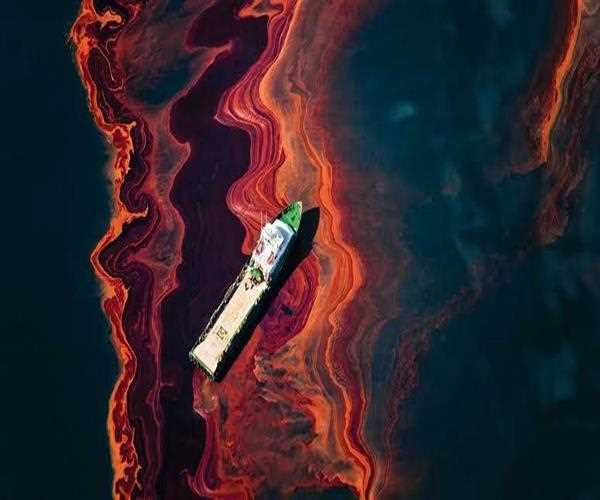
Scientists discovered a novel technique to clean up oil spills 50 years ago.
In lab wave pools, City College of New York researchers are experimenting with an oil-cleansing spray containing the chlorophyll molecule phytol.
Finding a technique to contain and remove the oil is the top concern following an oil spill. Physical booms are occasionally used by boat operators to catch the oil so it may be sucked or burned off the water's surface. However, other techniques for containing oil in water rely for adding synthetic compounds to the water because oil in water is difficult to confine.
Chemicals and wave action break down the oil into smaller particles in a process known as dispersion, which subsequently spread and slowly biodegrade over a wide area. Chemical herding is a further option. Crews spray a substance around the spill's perimeter to contain an oil spill using chemicals.
The oil thickens as a result of the compound remaining on the surface. It can be burned off once it has grown sufficiently thick. Chemical herding gets all the oil, unlike mechanical removal or dispersion, but it necessitates calm water, which renders it problematic in some accidents. The method has been utilised since the 1970s, but up until recently, soap surfactants—chemicals used to corral the oil—did not degrade over time. They would continue to exist in the ecosystem after the oil burned out. Chemical compounds constructed of phytol, a component of chlorophyll that gives algae their green colour, have been produced by researchers at the City College of New York under the direction of chemist George John and chemical engineer Charles Maldarelli.
It is the first all-natural, non-toxic method for cleaning up oil spills. We chose to create molecules that came from natural products since they would naturally biodegrade because we didn't want to add anything to the environment that would make it worse, according to Maldarelli. 'We like the idea of arming against something that people have done to the environment with a chemical that is abundant in nature.'
The phytol, which they extract from algae, was chosen by the researchers. They were aware that it would be stable in the environment because it is a natural chemical that separates as the chlorophyll degrades.
The phytol, which they extract from algae, was chosen by the researchers. They were aware that it would be stable in the environment because it is a natural chemical that separates as the chlorophyll degrades. The addition of a plant-based lipid helped the molecules align in a way that reduced the surface tension of the water because the phytol was unable to fully do the task on its own.
The scientists tested the natural herder on simulated oil spills in their Manhattan lab to determine if it could condense the oil as efficiently as conventional chemical herders. They adjusted the elemental balance until it herded as quickly as the chemical counterparts.


